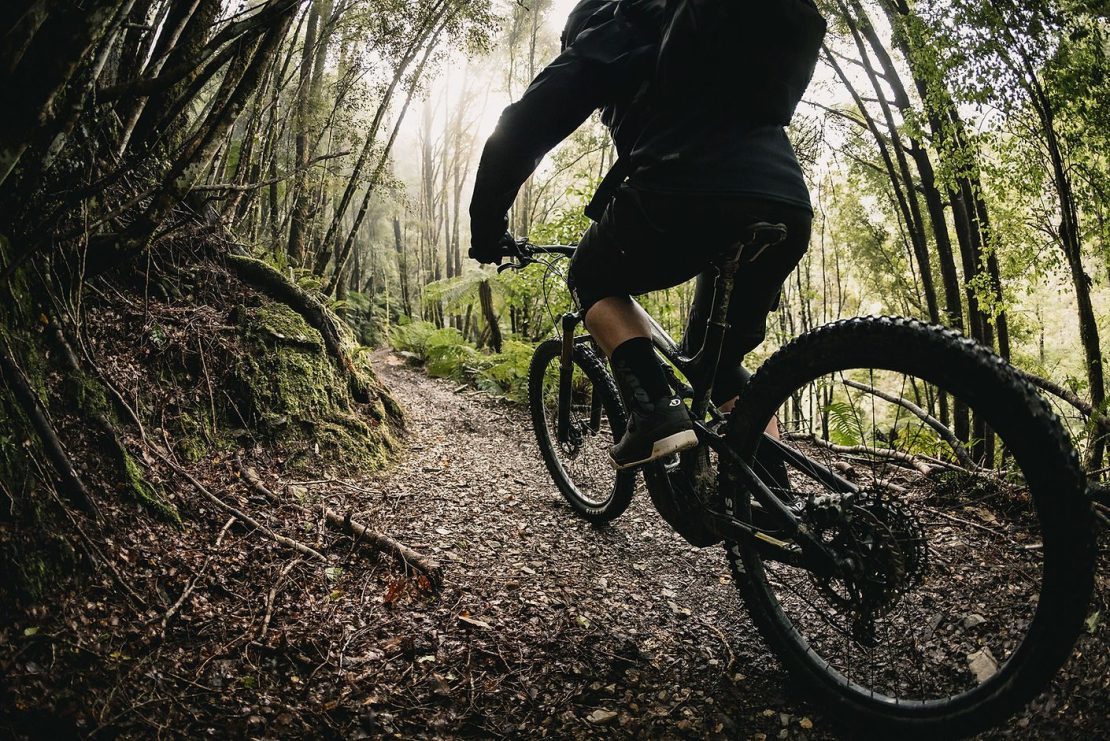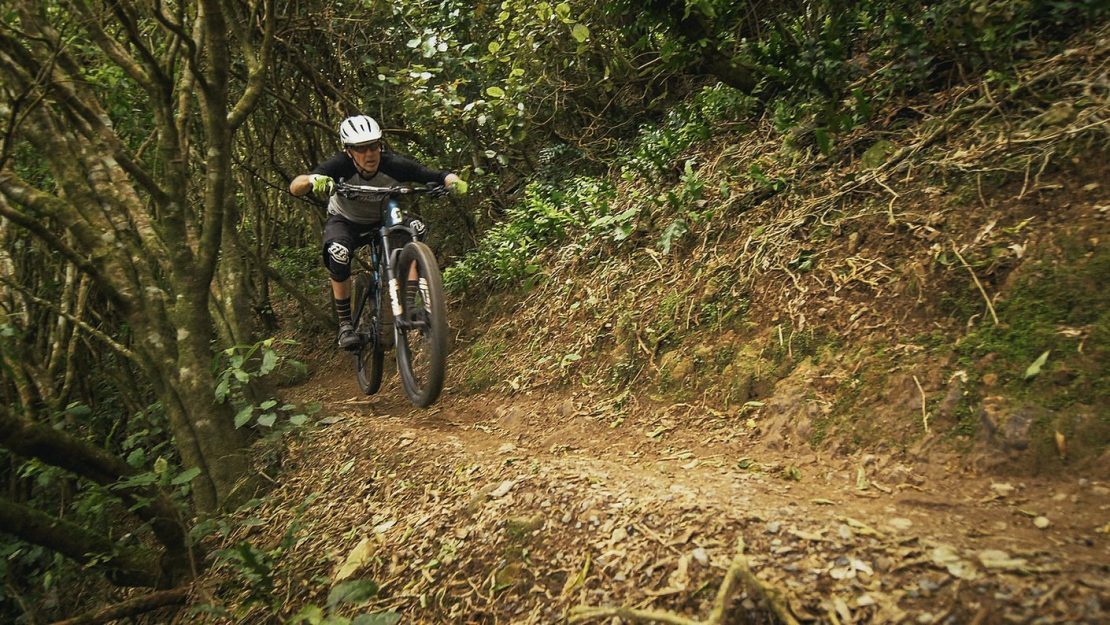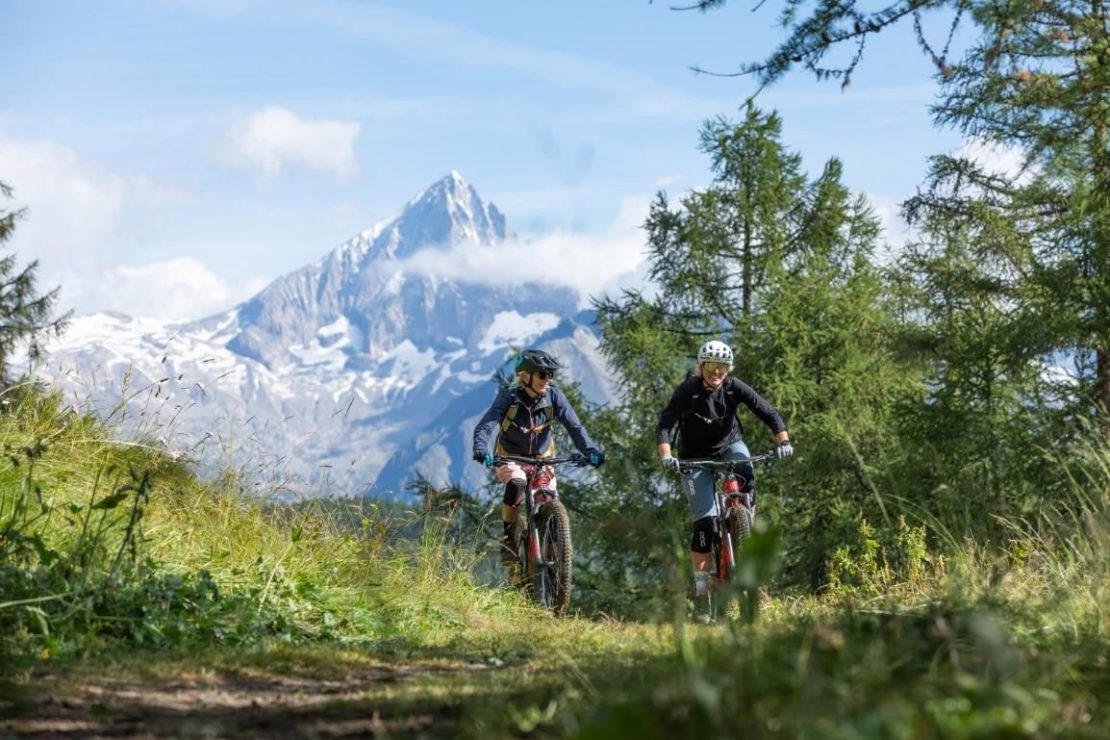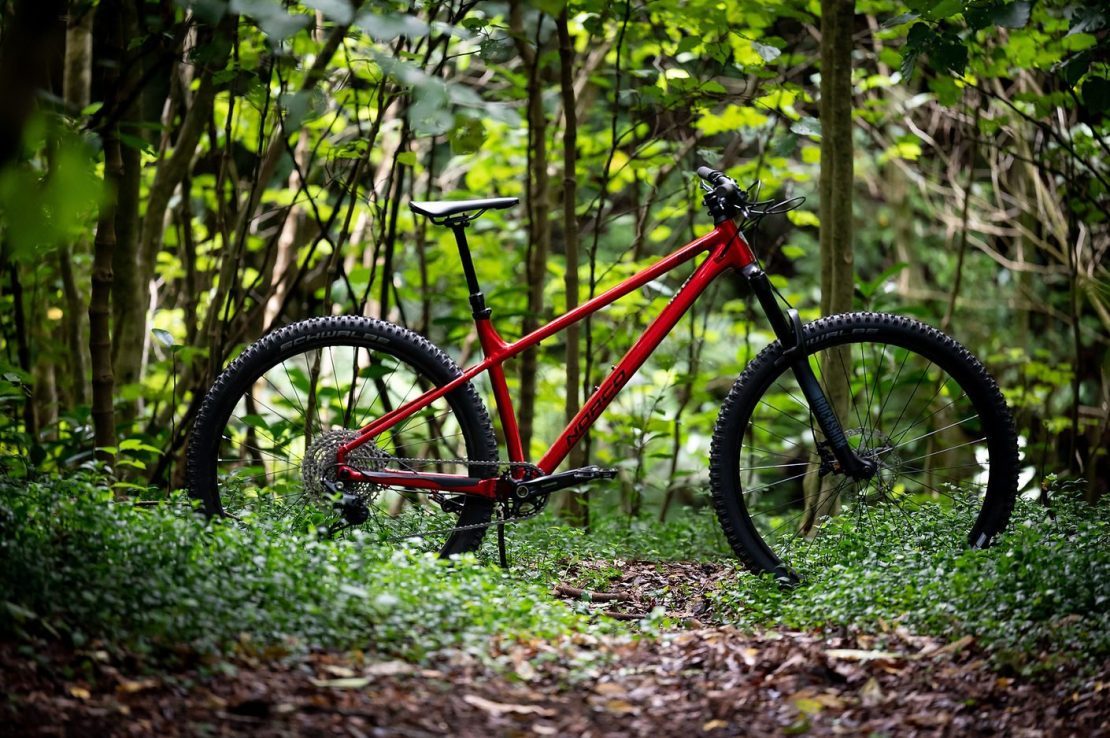Review: Galfer Brake Rotors, Adapters, and Pads
A wise man once told me, in the context of going fast on two-wheeled machines, that “brakes just slow you down”. Never a truer word was spoken, albeit delivered with the intention that you should do whatever it takes to stay off them and keep the throttle twisted/pedals turning for as long as possible, with the levers only deployed as a last-minute resort. In a way, the wise man wasn't only championing not braking, but having good brakes to call on to do their job strongly and instantly. It's somewhat ironic that, at the time of the imparted wisdom, disc brakes were still new tech in the moto world, and coaster and caliper brakes would continue to rule the bicycle realm for a good couple of decades yet. How the times have changed.

Today, those words still ring true, and we are blessed that we can “lay off the stoppers” until the very last instance, as the power of modern mountain bike brakes is far superior to anything we tried to stop our two-strokes with back then. It's inevitable that crossover between the two sports has taken place, with moto companies either having influenced development within the bicycle industry, or jumping into the pool completely and applying their experience to the testing waters. Spanish company Galfer has taken the latter approach and is offering a wide range of braking options for the pedal set.
If you've never heard of Galfer you're probably not alone, yet they are not exactly a new player in MTB, having developed brake pads for bicycles since 1990. Their automotive history goes back as far as 1952, so they know what they're doing. Being mainly marketed in Europe for most of that time, they are now expanding into the international market in a big way. I was excited to see their name here in NZ and, serendipitously, I was looking to upgrade my eMTB brakes when I saw that FE Sports were distributing Galfer down under. A set of 223mm rotors, eMTB specific pads, and the necessary adapters were soon on their way.
The stock brakes on my eMTB were not bad, but not outstanding either, so I thought it would be a good test to see how much difference bigger rotors and special pads would make. The Shimano 4-piston calipers I was using were at the lower/mid-end of their range, so could they be made to work like a high-end calliper? Short answer, yes! Immediately the power was increased, noticeably, and the feel at the lever was definitely more 'grabby' - in a good way, like a sensation of the pads biting the rotor rather than dragging on it to slow the wheel. Whether this is due to the semi-organic/metallic compound or the bigger rotors, well, I'm not sure, but I'd say a combination of both is likely the answer. There is no noticeable increase in rotor flex over a 200mm disc, as the 223 uses a thicker 2.0mm steel which keeps them straight and resists/dissipates heat build-up better. The Centrelock to 6-Bolt adapters are beautifully made, by the way, and the tight interface between them and the rotors no doubt helps with the solid feel also.


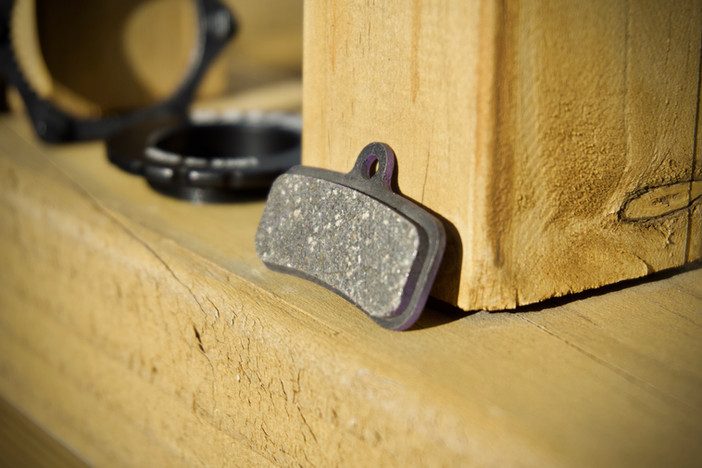

Having recently upgraded the callipers to Shimano's Saint model has stepped up the power even more, as you'd expect. The bite, modulation and precision of the braking is as good as anything out there, and the Galfer components are a worthy enhancement to any brakes, from low- to high-end. If you want to go fast, you need to stop quickly and consistently, and these Spanish brake guru’s bits will have you flying with the confidence to stop. Wise words indeed.
Distributed by FE Sports
Reviewed by Brett Kennedy
Story: E-Zing Back Into it Pt. 2
Yeah, yeah - I've been going on about how bloody brilliant e-mtbs are for a few issues now. I even evangelized before actually buying one; extolling their virtues as the saviour––or perhaps even death––of mountain biking as we've come to know it. In the ensuing months, riding almost exclusively off-road with added electric assistance, I can now tell you I was wrong. So wrong. You definitely shouldn't buy an e-mtb.
For a start, good luck even finding one to purchase. The worldwide shortage of eMTBs (due to the death of Sean Connery - which we covered in the last issue) is the result of every person over 60, on the planet, recklessly flaunting their Boomer wealth and privilege to shut out anyone else who might not be old and rich. I know this to be true, because I'm constantly told that eMTBs are only to be ridden when one becomes that magical age called “old”, which is approximately 10 to 20 years older than the vintage of the complainant. Even guys who are further advanced in years than my already post-middle-age tell me they're too young, which leads me to believe the optimal time to buy an eMTB is somewhere north of 80. I'm much too young, in that case, and obviously too stupid to realise the error of my ways.

eMTBs are cheating. Not like jamming a vial of EPO into your arm or shuttling, no, these are much worse. You don't get any form of physical workout - in fact you don't have to do anything at all, just sit there and let the bike do the rest! I know this to be true because I'm constantly told by these gurus of fitness that they want a physical challenge, and that can only be attained by pedalling squares at walking pace up a 2km climb for half an hour or more. If, after a climb, your lungs aren't about to jump out of your ribcage and you're not in peril of a stroke, then you're obviously a “pussy” and have no right to call yourself a mountain biker. No, I don't care if the eMTB gets you three ascents to one and adds speed and handling challenges to the climb, if you're not starting the descent with shot legs and barely enough strength to keep the bike upright and at speed, you're basically Lance Armstrong with knee pads.
OK, so perhaps you've cheated your way up the climb with no effort at all, passing real riders and rightly earning their contempt, and now you're at the start of what can only be defined as the real reason to ride mountain bikes: the descent. There's no way you're going to enjoy this on an eMTB. I know this to be true because I'm constantly told that real bikes are lighter and also something called 'flickable', therefore they are much faster when pointed downhill. If there are real riders waiting to descend the same trail, let them go ahead, because there's no chance you will catch them with all that extra weight, low centre of gravity and bursts of power out of corners and over rises holding you back. I'm sure the electrics interfere with GPS signals too, as my Strava consistently and falsely claims that I'm faster on every descent on the eMTB, which I know to be a falsehood because real riders who only ride 'flickables' tell me so. And I'd trust them over digital data tracking any day.
I guess one of the most important and sobering things riding an eMTB has taught me, is that I don't actually like mountain biking. I know this to be true because if I did, I wouldn't be riding off-road most days of the week; I wouldn't be doing more distance per hour of riding; and I certainly wouldn't be climbing more metres per ride. And, some of the trails I ride now (which I haven't for years) well, no real rider would go near them either…. Because, there's no shuttles to get them back to the top, so obviously that track sucks. Scrambling up goat tracks, riding over rocky outcrops, picking a point on a steep hill where there is no hand-built trail and seeing if you can even get halfway up it – this isn’t real mountain biking because there's no way you can do this on a *real* mountain bike. Sheesh, when will you get it?

Maybe, just maybe, there will be a real eMTB for real riders one day because, right now, the technology is prehistoric and used by Neanderthals. I know this to be true because I'm constantly told by real riders that they are waiting for the tech to advance and bikes to become the size of an iPhone64 before they make any decision that could hinder their real rider status. Bosch and Shimano, etc have no clue and aren't making any advances in motor or battery tech at all, and the bikes don't ride - or even look! - like mountain bikes (despite looking exactly like mountain bikes). Yes, they do ride differently to real bikes - if you call faster, more stable and more fun different rather than better.
If you're still confused about whether to get an eMTB or not, I suggest talking to those who know best on the subject: someone who's never ridden one. They know what's up, and should be listened to. Personally, I wouldn’t do it. I don't want to see packs of fit, happy riders getting in multiple runs of their favourite trails, or heading into hills they've never been into before - and I certainly don't want to see newcomers being drawn into the sport we love and guard so rabidly from outsiders (like roadies). In fact, I'm calling for a stop to all eMTB access on anything other than fire-roads; a minimum purchasing age of 70 for new bike sales; and no new bikes to be released until technology comes up with a way for the bikes to be activated by pedalling, as I'm told that currently it's not actually required on these abominations. And, won't someone think of the shuttle companies?! I never thought I'd see the day when mountain bikers would get to the top of the hill with motorised assistance, or indeed pedalling - and you should not contribute to the inevitable rapid downfall of the sport! I'll be getting rid of mine pronto, buying a diesel Hilux and a 20kg DH bike and saying “e-bikes suck” at every opportunity. That's real.
Words: Brett Kennedy
Images: Cameron Mackenzie
Story: E-Zing Back Into it Pt. 1
You don't need me to tell you that 2020 has been a shit year. Most say it's “strange” - but that's an understatement, and a deflection of the way the world has changed. Few realise the true impact that this significant event will have on all our lives in the future, and that they too will be directly affected by this sudden, unexpected development.
Yes, E-bikes have gone mainstream.

If you'd told me at midnight on December 31st 2019 that I'd be evangelising pedal-assistance for mountain biking, I'd have rightly claimed you were drunk and somehow dizzied by the euphoria and expectations of a bright new year. Well, that all got turned on its head around the middle of the year, when everyone cottoned on that riding bikes was a good way to pass the time. Suddenly, we had a lot more of it on our hands due to the other big event of the year: the death of Sean Connery. The weeks of stay-at-home mourning for the great actor and inspiration to bald men worldwide, opened up a chance to look deeper into our souls and ask: “do I want to ride more?” The collective answer was a resounding ‘yes’.
Apart from Bond dying and electrification of the world in full swing, ‘20 was shit because I spent most of the early part of the year with only nine functioning fingers - one too few for any kind of off-road bicycle action, which had caused the injury in the first place. Forbidden under the Connery lockdown anyway, it wasn't too much of a problem and the now-compulsory, solitary confinement Zwift seminars became a tolerated form of simulated exercise - without all the distractions of 'fun' and 'fresh air' and unneeded peripherals like 'dirt', 'rocks' and 'trees'.
Eventually, we were released back into the wild, Bond was burnt to a crisp and we all got on with our lives, albeit now always carrying that dreaded number with us everywhere: 007. Everyone was thinking the same thing; “gotta get an e-bike”. But, as with all great crises, supply was outstripped by demand and the masses started to gather in larger groups at the local dispensaries, fighting over any remaining stock and trying to get as high up on the lists for the new drug as soon as it was released. The people needed E and, like street junkies, they were prepared to do anything for a fix. I had to use my insider trading knowledge to get ahead of the pack and secure my own hit first, even if there was unsurety as to whether I actually needed it or how it would be of any benefit to my life. Fuck it - what harm can throwing oneself into the deep end of a black, deep, murky pool while hooked up to mains power actually do? The results would be shocking, but not totally unexpected.
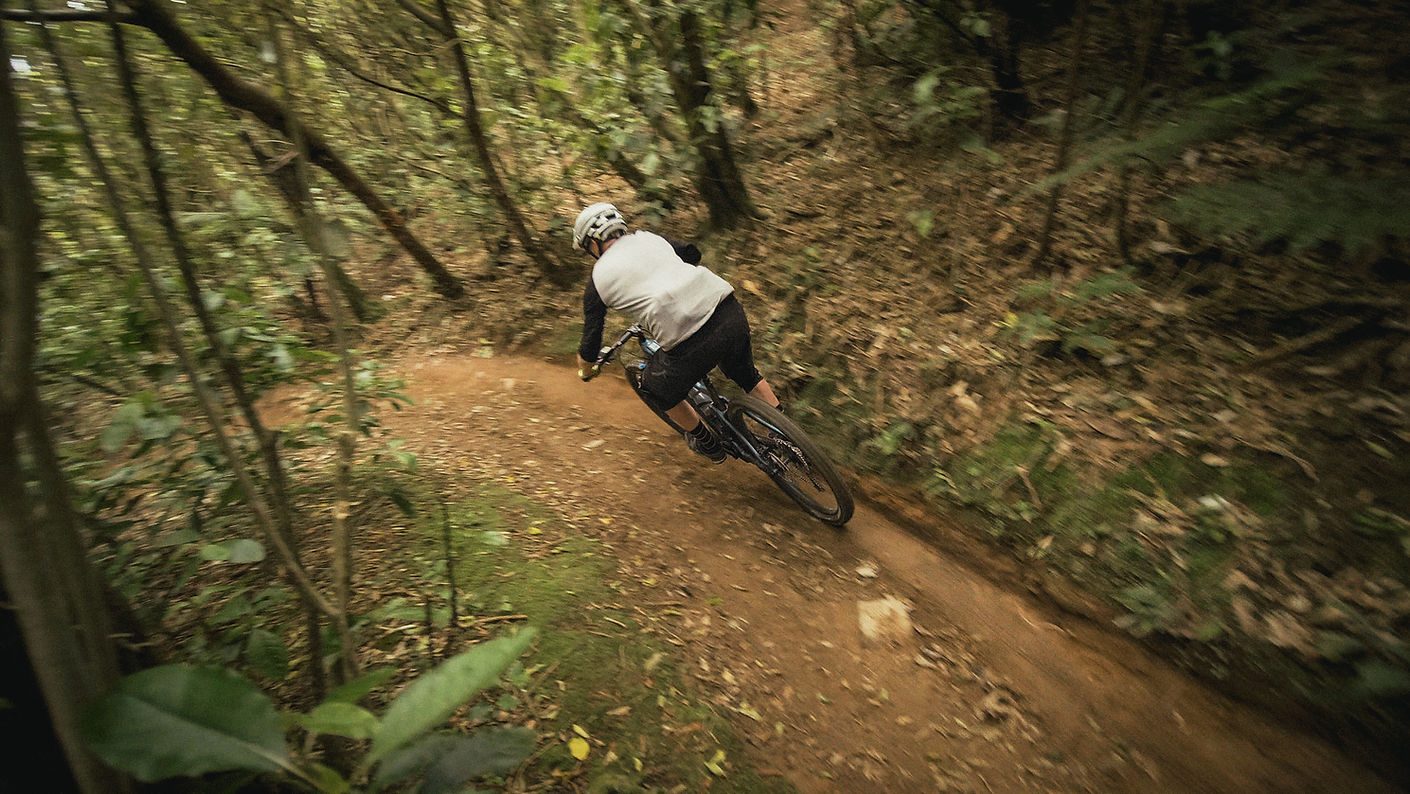
“E-bikes are for the lazy!” … “They'll make you fat and unfit!” … “It's cheating!” … These were all warnings that were heeded then dismissed like a true junkie. “This smack has battery acid in it? Meh, can only give it more kick, right?” These doomsayers were no doubt uninformed, biased and had no actual experience in the real world. I'd dabbled in small doses, and have never been afraid to get in at the pointy end when others would take a wait and see approach, looking for safety in numbers and a degree of 'everyone else is doing it now, so I will too' safety-net thinking. I was ready for the backlash and public shaming, but it never really amounted to any level that would cause banishment from society. Maybe I was onto something?
When a commodity is in high demand and short supply, the truly addicted will do whatever it takes to acquire it at any cost. I was prepared to pay more than I ever had for my addiction, and even look beyond my regular dealers. After a lean year when other substances from the same cycling family took over, I wondered if this was really still a habit I wanted to feed. I'd grown tired and bored of the slog uphill for a run back down, and even that aspect didn't deliver the same euphoria as it once did. I was fat, lazy and drunk - the perfect criteria for buying an e-bike, surely. It was time to reopen the gateway that mountain biking offered so long ago, and let in a new beast altogether.
For a so-called drug of choice, the options were more than a little limited with the uptake of new users. My research led me to a list of requirements that were met by the Scott Genius E-Ride. I'd ridden a mate's bike and wanted the Bosch motor and bigger 625wh battery. I couldn't get the first hit quick enough but, like an overeager kid in a candy store, I managed to put myself out of action for another week while heaving the beast into a work stand. Remember kids, some drugs are heavier than others so proceed with caution. Finally, garnished to my liking, we hit the trails.
Spoiler alert: I enjoyed it. I really liked it. I fucking loved it. Being fat, lazy and drunk doesn’t help - but it also wasn't a hindrance either. I finished that ride spent, if not more than I would've been on an old-fashioned bike. I'd ridden further, faster, and had a hell of a good time. Sorry. Sure, I couldn't walk comfortably the next day, but I couldn't wait to do it again. As with any drug, the long-term effects are the most important, but for now the short-term ones are hitting the spot. Whether the good times endure, or there's a massive comedown, will surely be determined in the honeymoon period between now and the next issue.
Words: Brett Kennedy
Images: Fin Lloyd
Story: Young Ones - Cam Beck
There must be downsides to life in a provincial town. Views of countryside and forests in all directions are all very well, but some of the opportunities available to big city kids are simply not there for their country cousins.

That cuts both ways, though, especially if the forest you can see at the edge of town is full of trails. Having a huge and growing trail network on your doorstep goes a long way towards making up for any lack of big-city amenities if your life goal is to be a great mountain biker.
Maybe your life goal gets that way because the trails are there? That’s a chicken and egg kind of discussion which really can’t be solved, but the procession of talented mountain bikers hailing from small town New Zealand is seemingly endless.
Cam Beck took his first ride in the Whakarewarewa Forest when he was eight years old, and he was hooked right then and there. Tagging along with his parents, he quickly caught the bug to test himself in events. Entering cross-country races from the age of ten didn’t result in instant success, but it didn’t put him off racing, either - it just set the hook a little deeper.
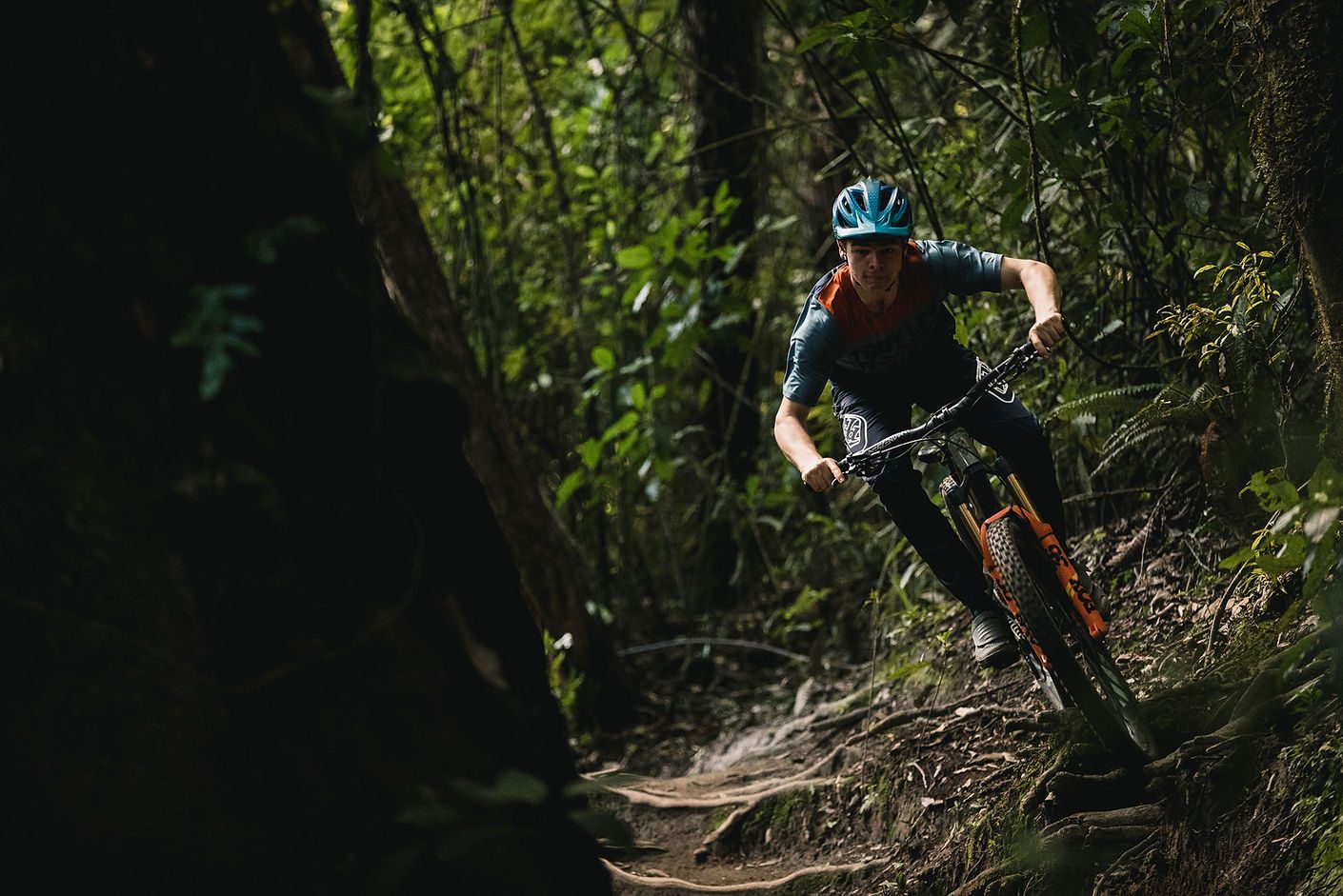
For the next few years, he honed his skills, and by his early teens he was well up in the field at any race he signed up for. As enduro events gained momentum, he gradually moved over to the gravity side of life. Each event was a learning opportunity, and small successes led to bigger ones. With every passing season, Cam became more determined to give the sport a real go.
Getting tight with a local bike shop is a key factor for anybody intent on competition. In terms of equipment, bike racing must be among the most complicated athletic endeavours there are - especially at the pointy end of mountain bike racing. So many elements need to be working at their best - besides the obvious one, which is the person on top of the machine. A relationship with a shop that has your back takes a while to establish, but once made it is a symbiotic thing of beauty. The shop gets a customer who will keep coming back, and the rider gets a team behind him to make sure everything runs sweet on race day. Nzo / Ride Central is a locally owned independent store with a comfy lounge-room aesthetic that Cam has called home base since he got started.
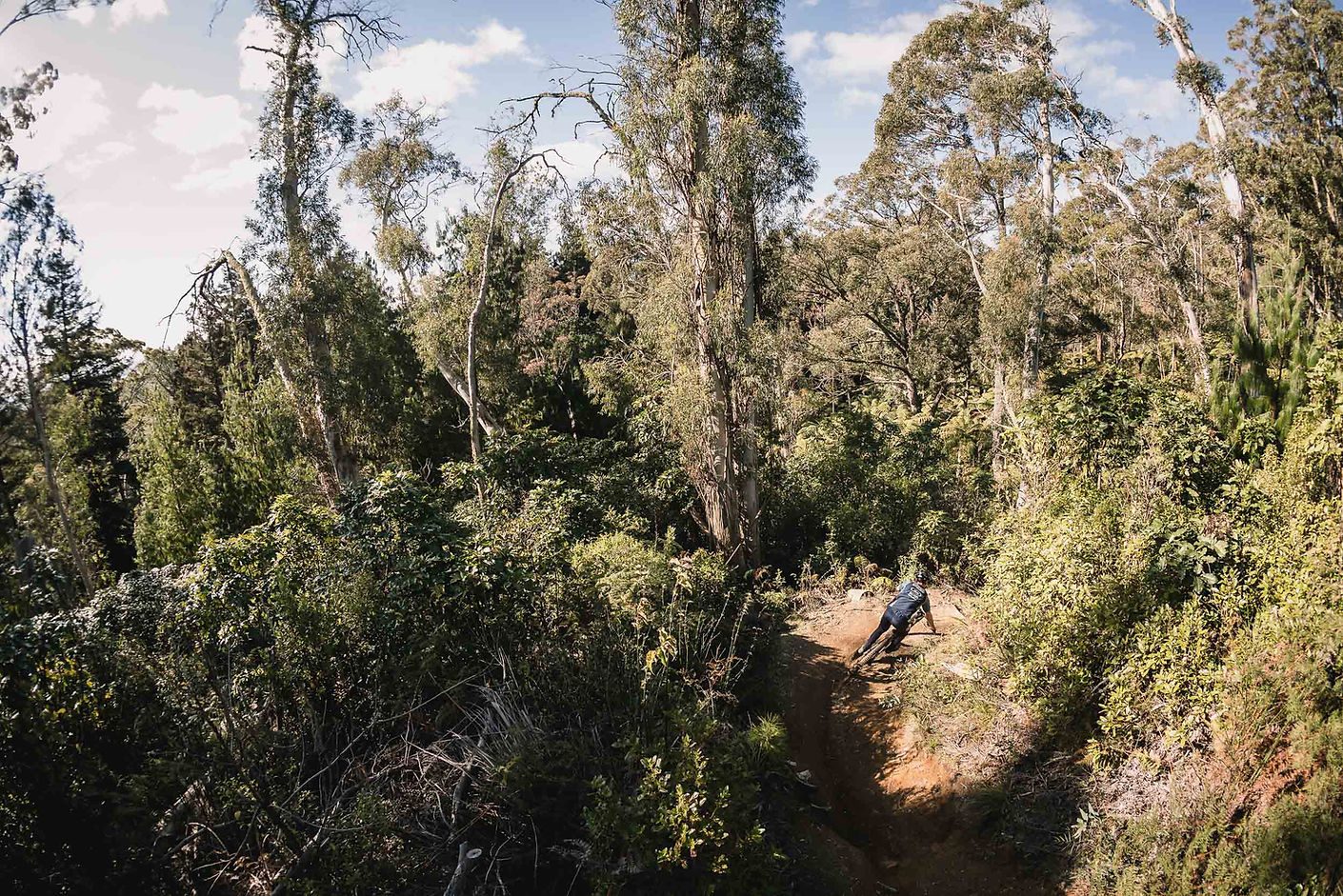
Cam’s home is a quarter of an hour southwest of Rotorua, in the heart of an area offering some of the best road riding anywhere, deep in the Waikite Valley. If the forest wasn’t so well-endowed with trails, Rotorua would attract people to ride the roads out there. Plenty of locals do just that; quiet tar seal leads riders through farmland and patches of forest - Cam makes use of the valley roads on a weekly basis. Gym work three days a week, and at least five rides in the forest, rounds out the workload under the watchful eye of coach Mark “Cabin” Leishman.
Mike and Sandra at Hyperformance Hardware gave him good deals on the bikes he rides; an Ibis Ripmo for enduro, and a Santa Cruz V10 for downhill races.
Cam has been able to get some great results under his belt, the best being a win in the Under 17 category of the 2020 edition of the Giant TOA Enduro at Crankworx Rotorua. That result would have put him second in the U21 bracket. He scored a second place in the Downhill in his age group at the same event, with a time that would have put him 13th overall.

Consistently finishing in the top three or four in National level races is a great start, but if you want to find out how good you are at any type of bike racing, you have to go overseas. That is as true for mountain biking as it is for any other facet of the sport.
Dozens of young New Zealanders have cut their teeth at the local, had some success at the races, and followed through with a go at a racing career by taking the trip to Europe. Most of them have what looks like a pretty good time, some of them stick at it for quite a few seasons, and a select half dozen or so “make it”.
This year, Cam had locked in the programme for his first foray offshore.
He is way ahead on his schoolwork, and the outline for this year was to take some time out to travel to Taiwan and Australia. An Asia-Pacific EWS round in Taiwan and an EWS qualifier at Falls Creek in the Victorian Alps would have been a great experience and hopefully provided handy points for future race entries. Some EWS rounds and a downhill World Cup round were the target in 2021, but things did not go to plan.

This year has not turned out like any of us expected it to, and Cam is no exception. The Coronavirus pandemic has made an international race programme difficult, if not impossible. Events have been canned, the risk of travel is much higher than usual and leaving New Zealand for a short racing trip to several countries is out of the question.
For Cam and other young kiwis on the brink of a serious go at a bike racing career, or the people already in the ranks of the professionals, it is a real challenge and a situation with many more unknowns than usual.
Planning a campaign is never easy. The broad outline for Cam still includes a red hot go at international racing after high school is behind him. Results will help him decide whether to put racing on the back burner until after uni or push further study back in favour of more racing.
Whatever the global situation dishes up, we are sure Cam Beck has a bright future in bike racing, when the time is right.
Words: Gary Sullivan
Images: Cameron Mackenzie
Release: BrakeAce's new wireless Brake Sensor
"Last year we released our wired BrakeAce sensor and app, and we have been able to help some of the biggest companies and fastest riders in the world understand their braking and get faster. Since this time, we have focused on creating a completely wireless system for riders at all levels, and we are offering these now on Kickstarter.

The BrakeAce sensor fits between your frame or fork and your brake caliper, and can be installed just like any other brake spacer. The sensor size has been reduced, and only requires you to increase your rotor size by 20mm from the smallest your bike accepts. The sensor communicates by Bluetooth to your phone or tablet, and you can view or analyze your rides on any device or computer.
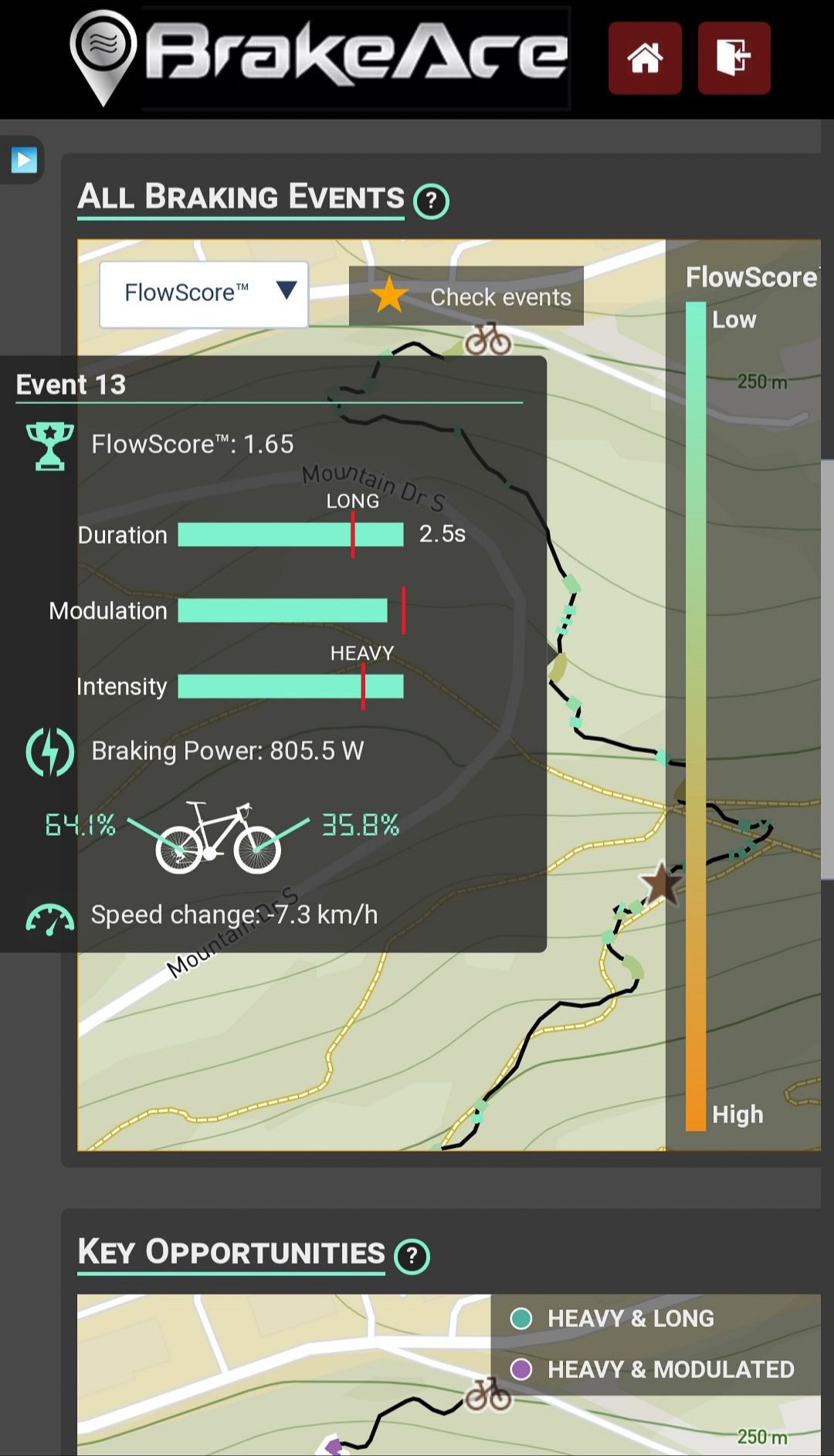
Once you’re in the BrakeAce app, you can choose to view just your FlowScore as a simple way to compare your braking with friends or between different runs, or you can look at details of individual brake events across the trail. Custom algorithms analyze all of your braking events, and the app shows you the three places on the trail where you have the most room for improvement. These are called your Key Opportunities, and you can track your progress in the app where your rides are stored.
The aim of the BrakeAce system is to make it easy for riders at any level to get faster without getting fitter, and simple scores mean you don’t need a team of data interpreters to do so. The app is made for riders to use on their own, but we want BrakeAce to work with coaches too. We are already looking at ways to integrate video tutorials and remote coaching into your braking recommendations.
The BrakeAce Kickstarter campaign offers early pricing of US$892 for a set of front and rear sensors and the app, delivered in January 2022. After the campaign is finished, BrakeAce will be available through the BrakeAce website."
Story: Cut From a Different Cloth - Louis Hamilton
How about this for the start of a profile….
When Louis Hamilton was 11 years old, he rode sweeper at the ‘06 World Downhill Championships.
Did that get your attention?
The event was in his hometown of Rotorua and his father, Dave, had raced the course the year before, at the Oceania Championships. Dave Hamilton has been at the centre of most things downhill in Rotorua since the beginning of the century, and racing or organising events and courses have occupied many weekends for the Hamilton household over the last two decades. When Dave lined up at those Oceanias, Louis had watched from a vantage point up in the infamous ‘larches’, a particularly nasty part of the course, and the hook was set deep.

A year on, he owned a second-hand Specialised DH bike, and was already able to get down the course - so he got to be the sweep. A baptism of fire, for sure, but after making as many runs as he could over the week of racing, he ended up getting down the track only a minute slower than Sam Hill, who was World Champion that year.
It was only natural that Louis would take racing seriously after being immersed in an event like that.
Competition became his passion for the next decade; battling it out for the summer in New Zealand, and like so many of his colleagues, taking the trip to Europe and North America during our winter.
Racing the World Cup circuit for five years is a huge undertaking. Louis and his brother Connor visited many places they would never have gone to if not for bike racing. And testing yourself year in and year out, against the best in the world, is an opportunity few people get, and an education that escapes most.
Getting started so early had a nice by-product: when the time came to cut back on the racing life a little, Louis was still a young man and, while he cut his teeth in the construction arena, he started building the life he has now.

During a racing season a few years back, the Rotorua downhill organisation Descend Rotorua decided to run a coaching clinic for young riders. Louis and Connor put their hands up to lead it.
On the day, up in front of a group of hopefuls, they realised that while they both knew how to do the things they needed to be fast down a hill, they didn’t have the skills required to translate that knowledge for somebody else to grasp and execute.
That was a challenge for Louis, and he spent the best part of the next six months diligently analysing his methods - figuring out what he was doing so he could impart that knowledge to another rider. The methods he used to do that are proprietary information, and are to remain undisclosed, but be sure they were thorough and accurate.
Some of the things Louis discovered during this period of self-examination surprised him. They did address the challenges he faced back in that spur-of-the-moment clinic. He now knew what he was doing in a far more precise way.
And, he could break it down and deliver it to others.
By that time, he was ready to quit the day-job and launch his own business: Tuned.
In its second year, Tuned will take riders at any level and take them up a notch - or more.
Louis reports that his customers come from all points on the spectrum - complete beginners who want to get started correctly, old hands who have been doing it wrong for years, and pinners that need that extra one percent to elevate their performances.

All of them can benefit from a professional coach who is still able to mix it with the best in a race situation and has put in the study of his own methods to find out exactly what works.
At the same time as he has been developing his business, Louis has been building a family with his partner. Ashley Bond is a great rider, a handy person to have beside you in a business situation and has her finger on the pulse due to her involvement in another bike based operation. Together, they are kept busy with two-year-old Jayla, their daughter.
Recently, I was headed back to the car park at the end of an after-work pedal. I dropped into a clearing and found myself in the middle of a gang of very young riders, gathered around their mentors. Louis and his off-sider on this occasion, Cam Beck, were leading a Rotorua MTB Club youth coaching session.
Ten or so kids were obviously having a really great time, and enthusiastically following their coach’s instructions.
That Louis (and Cam for that matter) would devote an evening to help youngsters improve is clearly admirable but, in Louis’ case, it would have come after a day doing much the same for other customers. Yet, there he was, still out there, and looking to me as if he was really enjoying himself.
It crossed my mind then, that his charges were about the same age as he was when he rode that sweeper lap - a nice way to tie the whole thing into a neat circle.
Words: Gary Sullivan
Images: Cameron Mackenzie
Release: Bosch's new Tour+ Riding Mode
The new Tour+ riding mode from Bosch eBike Systems offers pedelec riders dynamic, continuous support depending on their own effort. This eliminates the need for manual switching between the common drive modes. The new riding mode is designed in particular for sporty rides: With Tour+, eBikers pedal a little harder on flat routes than with the familiar Tour mode. By increasing the rider's own effort, the riding mode saves energy and extends the boundaries for extended excursions. So, Tour+ challenges sporty riders and rewards their slightly greater effort with increased range.
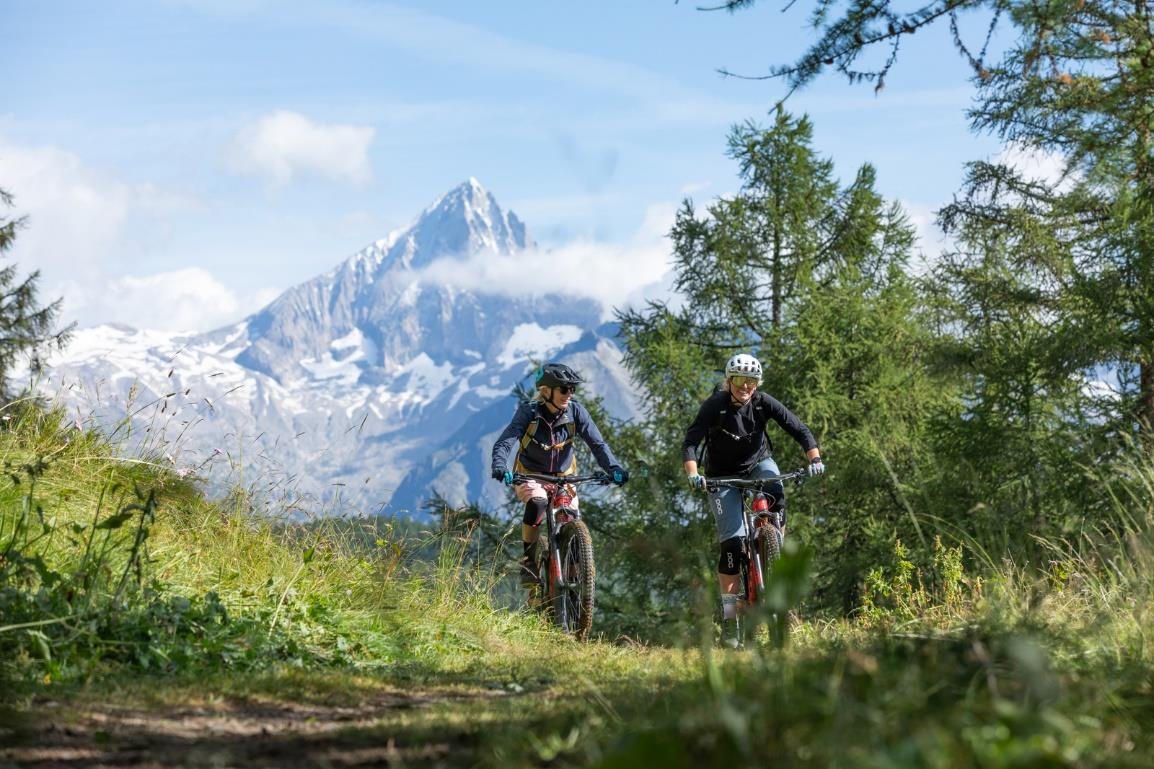
Natural riding sensation due to sensitive motor support
Sensors on the motor measure important riding data more than 1,000 times per second, from which the Tour+ riding mode derives the optimum support for eBikers. The additional power is sensitively dosed to create a natural riding sensation. The degree of support varies dynamically and continuously between the Eco and Turbo drive modes. Tour+ allows eBikers maximum comfort in different riding situations and ensures that they can fully focus on the ride.
“With the Tour+ riding mode, eBikers who like to exert themselves a little more and put more of their own effort into pedalling get a comfort-oriented and range-optimised support level”, explains Claus Fleischer, CEO at Bosch eBike Systems. “There is no need to switch between the familiar modes, riders can devote themselves completely to their eBike experience and enjoy maximum riding pleasure. The system supports a little less on flat and easy routes to increase range. If needed, the support is adjusted situationally based on the pedal pressure to overcome inclines.”
The Tour+ riding mode is available from July 2021 for eBikes with the Bosch Performance Line CX from model year 2020 and derailleur system.
Release: Norco's Three new eBikes
Norco’s VLT E-Mountain Bikes give you more of everything you love about riding, and with our completely redesigned Range, Sight and Fluid VLT models, we’ve got all types of rides covered with the latest Shimano EP8 drive system, choice of frame materials and the freedom to choose your ideal battery capacity. With 30 possible combinations, our VLT E-MTBs let you call the shots and get extra out of every ride.
FRAME MATERIAL CHOICE
The Range and Sight VLT’s are available in Carbon and Aluminum and the Fluid VLT is available in Aluminum.
BATTERY CAPACITY CHOICE
With three proprietary battery options available featuring future-proof 21700 lithium ion cells for maximum energy density, allowing you to custom-select your ideal capacity from 540Wh, 720Wh or massive, industry-leading 900Wh.
EASILY-REMOVABLE BATTERY
Proprietary batteries remove and install in seconds with a single onboard tool for off-bike charging, bringing along a spare, or customselecting the capacity you need for the ride you’ve planned.
SHIMANO EP8 DRIVE SYSTEM
Shimano’s most advanced EP8 drive system is spec’d through the entire Gen 3 VLT lineup. It’s 380g lighter than previous models, features 85Nm of torque with increased efficiency, and is rider customizable using the E-Tube Project app.
E-OPTIMIZED COMPONENTS
Every VLT is spec’d for the rigours and added mass of E-mountain biking, including E-certified forks, oversized 4-piston disc brakes, robust 29” wheels with reinforced spokes and freehubs, and grippy tires featuring supportive sidewalls.
RIDE ALIGNED™
Norco’s exclusive Ride Aligned™ Design System matches each VLT E-MTB to the human who rides it. Rider-first geometry and suspension kinematics combine with custom fit and suspension tuning using the Ride Aligned™ Setup Guide to provide unparalleled, personalized performance from day one.


NORCO RANGE VLT
INTENDED USE: ENDURO & BIG MOUNTAIN
FRAME MATERIALS: CARBON OR ALUMINIUM FRAME AND SEATSTAYS, ALUMINUM CHAINSTAYS
FRAME/WHEEL SIZE: S, M, L, XL / 29”
SUSPENSION TRAVEL: F: 180MM, R: 170MM

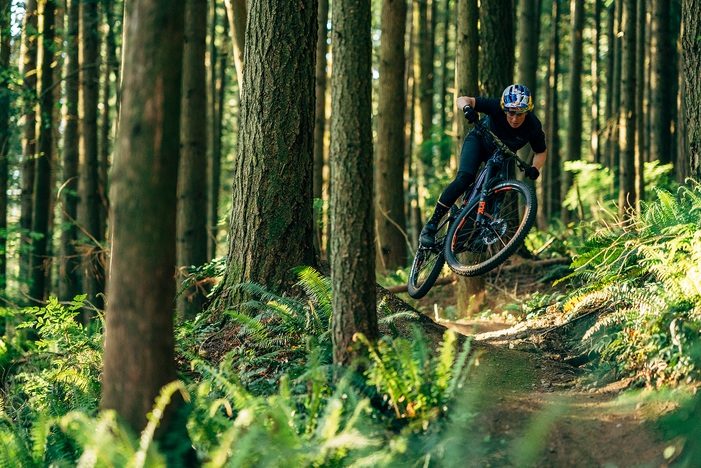
NORCO SIGHT VLT
INTENDED USE: ALL MOUNTAIN FRAME
MATERIALS: CARBON OR ALUMINIUM FRAME AND SEATSTAYS, ALUMINUM CHAINSTAYS
FRAME/WHEEL SIZE: S, M, L, XL / 29”
SUSPENSION TRAVEL: F: 160MM, R: 150MM


NORCO FLUID VLT
INTENDED USE: TRAIL
FRAME MATERIALS: HYDROFORMED ALUMINUM
FRAME/WHEEL SIZE: S, M, L, XL / 29”
SUSPENSION TRAVEL: F: 140MM, R: 130MM
Find out more here.
Review: Norco Torrent
Hardtails. It’s where we all started. Whether it was a Raleigh 20, a PK Ripper, or a 90s Diamondback, almost universally we all started shredding on a hardtail bike of some description.
However, with the wave of decent full suspension bikes coming to market from the 2000s onwards, most regular mountain bikers have moved to a full suspension bike being their usual trail machine. Despite this, the diehards have remained - outliers; trolling us on their nimble single speeds; others cajoling us on their 26” wheeled fluro-accented 90s machine, with clothing to match; and the odd hardcore XC racer, rolling up on the starting line. Some even manage to hit the trifecta and achieve a higher level of consciousness by occupying the Venn centre of those three circles in one sweet rigid moment. But, if you thought for a moment you didn’t fit any of those categories - you like gears and on-trend fashion, and have no interest in racing - the good news is there is still a place in hardtail nirvana for you. The mountain bike industry is always on the hunt to be able to provide exactly what you are looking for and, as such, a new category has emerged in the last few years that caters to those who might like the aggressive riding characteristics of a slack full suss, but without some of the drawbacks such as extra cost, maintenance and lack of pumping ability.
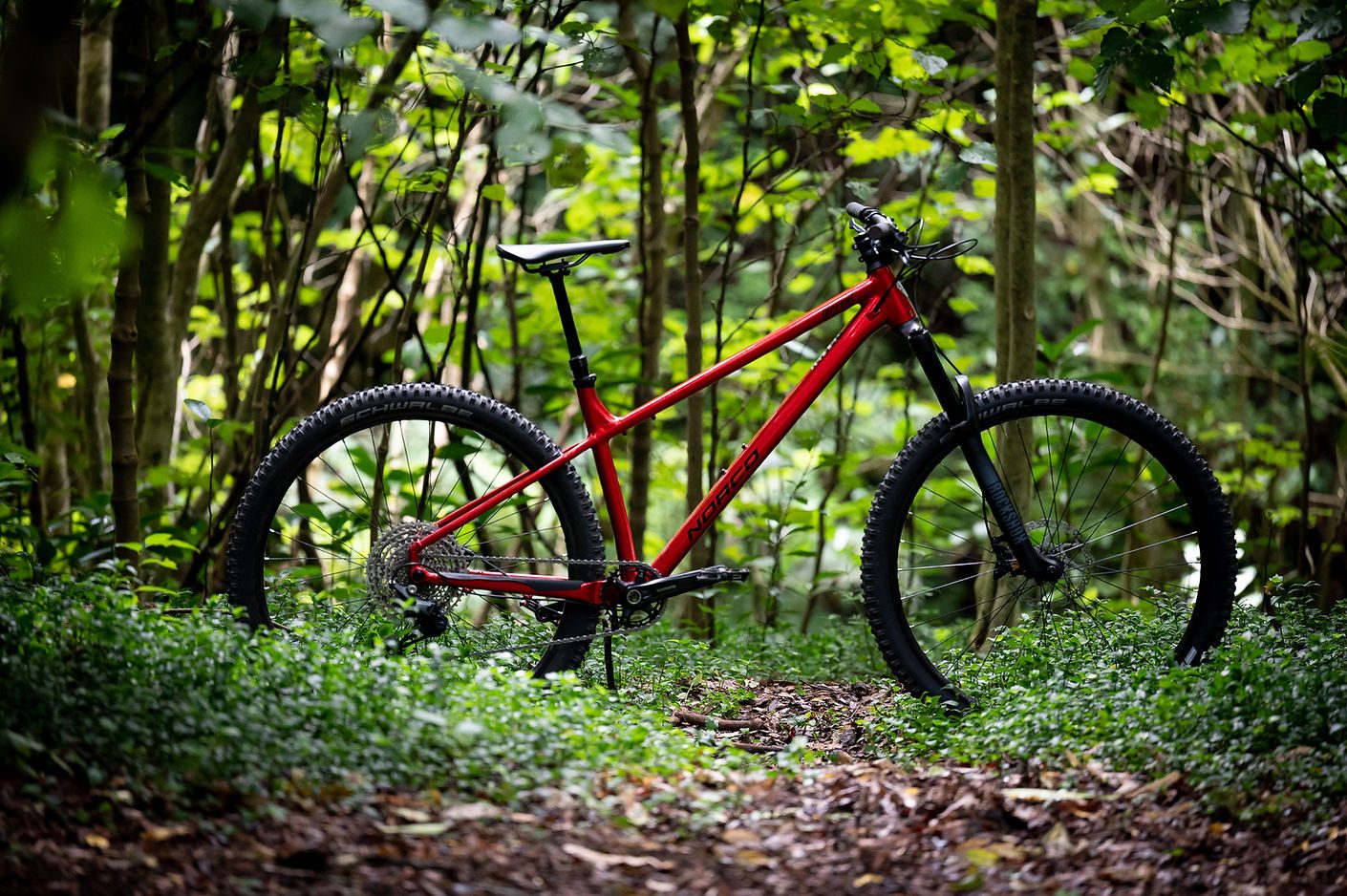
The new Norco Torrent is one of these bikes - and we’ve had the chance to spend some time reviewing it. The Torrent comes in two frame materials (steel or alloy) and at two price points for each frame. The A2 comes in at $2499, the A1 (tested) at $2999, the S1 at $3299, and the flagship S1 at $4499. The steel frame is also available as a frame only for $1099. Like most bikes in the current climate, stock is extremely limited so you may have to ring around a few shops before you are able to get your hands on one.
First off, yes, it’s true - and now officially, scientifically proven in the NZ Mountain Biker laboratory - red goes faster, and therefore this Torrent is damn near flying. It’s got that same kind of wow factor that made your eyes pop out of your head when you unwrapped your first bike on Christmas day. You can’t help but smile at this bike. And, maybe that’s a bit of a clue as to what this bike is all about; hardtails have a way of harking us back to simpler times, before we began obsessing about what difference five psi might make, tokens in our shocks, and if a nitrogen fill would actually make us faster. No. hardtails force the rider to remove themselves from any such trivialities, name them for what they are (“bull s%*t”) and let their own riding skills stand for themselves…. Or not. It’s an approach to riding that is both freeing, and terrifying.
But enough waxing poetic. What is the new Torrent all about? Well, in the case of aggressive hardtails, it’s all about the numbers, and numbers that have been usually associated with that mad friend you grew up with who was always putting an insanely long travel fork on his hardtail (eventually he snapped his headtube right?) but, damn, he could ride. We all had a friend like that. Well, maybe that mad friend was on to something, because the aggressive hardtail category is now a real thing.
So, let’s start with a few of the features of the Torrent. First up, on the A1 we’ve got the 150mm travel RockShox 35 Gold fork, that’s matched to a 64 degree head angle. By way of example, the Norco Sight, a bike aimed at EWS/Enduro riders, has a head angle of 63.5, so that’s the kind of territory you are in. Our large has a 480mm reach, 76 degree seat tube, and a 425mm rear centre (chainstays). These numbers might not mean a whole lot to you but for a hardtail they are right down the aggressive end of the spectrum.



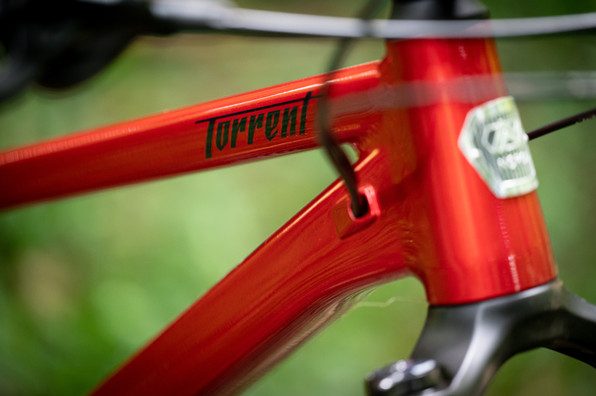
The Torrent is rolling on Stans Flow D 29” rims, (pre-taped, and with Stan’s valves and sealant in the box we got this rolling tubeless in about 10 minutes) with Schwalbe Hans Dampf rubber. In the drivetrain, the Torrent gets the value oriented new Deore 12 speed 10-51 1x drivetrain. And lastly, keeping things under control, are the Shimano 4-pot 420 brakes. You also get a Trans-X 150mm dropper and a Fizik Taiga saddle all for $2999.
After a relatively simple build, it was out into the streets for a quick rolling check and feel. Instantly, the thing that popped out to me was how similar to my last long travel full suspension bike this Norco felt in terms of overall position in the cockpit. Nice wide 800mm bars, and that visual cue of where the front wheel sits out in front of the stem - it all felt like it was trying to mirror the experience of a long travel full suspension bike in terms of rider body position. A great start!

Out on the trail and the thing that hardtails beg you to do is get up out of the saddle and sprint. Every little climb, every little straight, you know that any effort you put in is rewarded with instant acceleration. Caution, you may start referring to your full-suss bikes with phrases like ‘Mr Blobby’ or other such names, because this thing just wants to go. But any hardtail can say that. The thing with the Torrent, is that it wants to keep going faster when the trail turns down. If you’ve moved from an XC oriented hardtail to a more trail oriented full suss (a pretty normal progression in bike ownership) you might not be aware how much geometry and tyre choice factored into the feeling of confidence that your new long travel bike has given you. That’s what the Torrent has tapped into here. All those things that make modern full suspension bikes great, but in a hardtail package. So, when the trail turns a bit techy, gets a bit of flow, or you see a few jumps, whoops, opportunities to manual etc, you don’t for a moment think “darn I wish I was on my full suss bike so I could enjoy this bit of trail” - you just rad on through it!
Of course, there are limitations to this. Firstly, decent size jumps. No matter how good your technique is, unless you are riding perfectly sculpted dirt jumps, you’ll still be coming back down to earth with a fairly decent impact on a hardtail. There is no way to avoid this, but good technique can make it the best version of what it is - you and a hunk of metal hitting the earth at 30 km/hr. On the plus side, knowing this is imminent, and also knowing you’ve got new abilities to accelerate quickly as you approach the takeoff, you might actually find yourself clearing jumps you didn’t before, and focusing more on your actual jumping technique. For better or worse, this bike won’t hide anything. If you can jump well, you will jump well on the Torrent, if you can’t - and you need your squish to cover your poor technique or habit of always landing on the knuckle - the Torrent won’t save your ass from your poor technique.

But the sweet spot for the Torrent is surprisingly large. On singletrack that isn’t insanely rough, has twists and turns and built in flow, you’ll be surprised just how good it feels. In fact, if you know how to pump, you’ll be reminded of just what you give up by going to a full suss bike in this area. A flowy singletrack trail with lots of rolling undulations and opportunities to make speed through pumping is what this bike was made for, and you’ll be surprised just how fast you might find yourself going as you use the trail to create speed - and that is a real smile inducing way to ride.
We would love to test the steel frame version to see if we could really ‘feel’ the fabled compliance of steel vs alloy, but the reality is the 150mm of suspension and chunky tires are going to absorb most of that, so it might be hard to argue for the steel option based on performance. However, we also know steel bikes are just their own version of sexy - and you’ll get extra street cred to boot - but alongside that, they also have great qualities in terms of fatigue resistance (think of all the big hits you’re giving this thing!) so, in saying that, for an extra $300 the entry level steel model might just be our pick of the bunch.

Despite being impressed overall, there were a few minor things that didn’t quite work out. The internal cable routing rattled, the Fizik seat just didn’t seem to fit our bottom shape, and though thin grips seem all the rage, these ones seemed just a bit too thin and were really just kind of hard. Those are all pretty minor changes though.
The spec on the A1 model we tested was the no frills option, and that helps keep the price under $3k, but it doesn’t mean there is a lot we’d change. In fact, the 12 speed Deore groupset is sublime. You also get Shimano hubs as opposed to some non-branded cost saving option, and the Stans rims held up well to the abuse we put them through. The 420 Shimano 4-pot brakes don't have quite the same refined lever shape or overall shininess of their higher priced siblings, but they don’t lack for power either. When you need to drop the anchors, they do the job just fine. Speaking of the jumps and drops you’ll be wanting to do on this, it’s when you start to trust the geometry and ride with more and more confidence that you also realise the limitations of the 35 Gold fork. It doesn’t have the damping refinements of it’s more expensive brethren such as the Pike or Lyrik, which is a shame as you have to go all the way up to the $4499 top spec model to get a better fork. It’s not that the fork isn’t up to handling itself with big hits, it's just that it's a simpler damping system all together. This means that to get the sensitivity on the small impacts you lose some of the control at managing the big impacts, which is a shame, as getting rowdy is what this bike is built for. Of course, the simple solution is; if you’re focusing on riding rowdy, set it up accordingly and it will take care of you just fine. Switching out a fork isn’t as easy as switching out the grips, but if this bike had something like a Pike on it, we think it would have been a home run.
All in all, the Norco Torrent is an impressively fun bike to ride, with a solid component package that will impress you with just what modern hardtails are really capable of. It’s not for the dirt jumpers nor the hucksters, it’s a trail bike that will go anywhere and everywhere and make you wonder why you’ve been carrying that saggy rear shock around with you for so long.
Distributed by Advanced Traders | RRP: $2,899
Words: Lance Pilbrow
Images: Julia Moore-Pilbrow
Release: 100% Aircraft 2
Aircraft 2 Has Landed. The evolution continues with our ongoing development and advancement of helmet technology. Created with world-class performance in mind, our proprietary Smartshock® Technology works inconjunction with our Patent Pending injection molded chin bar and Multi-Density EPS foam to keepyou safe and extend performance all day long. Elevate your performance with the Aircraft2.

Features
-
Carbon Fiber shell with Patent Pending injection molded chin bar integration
-
14 point Smartshock® Rotational Protective System
-
Dual Density EPS injection molded with polycarbonate in two size-specific molds
-
Massive airflow with 20 oversized ventilation ports
-
Multi-point adjustable visor designed for maximum vision and goggle stowage
-
Washable, moisture-wicking anti-microbial suede comfort liner
-
D-Ring buckle for a secure fit and maximum security
-
Certified ASTM (F1952-15), CPSC (16 CFR 1203), CE (EN 1078:2012+A1:2012)




